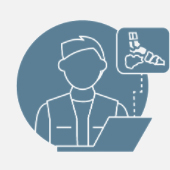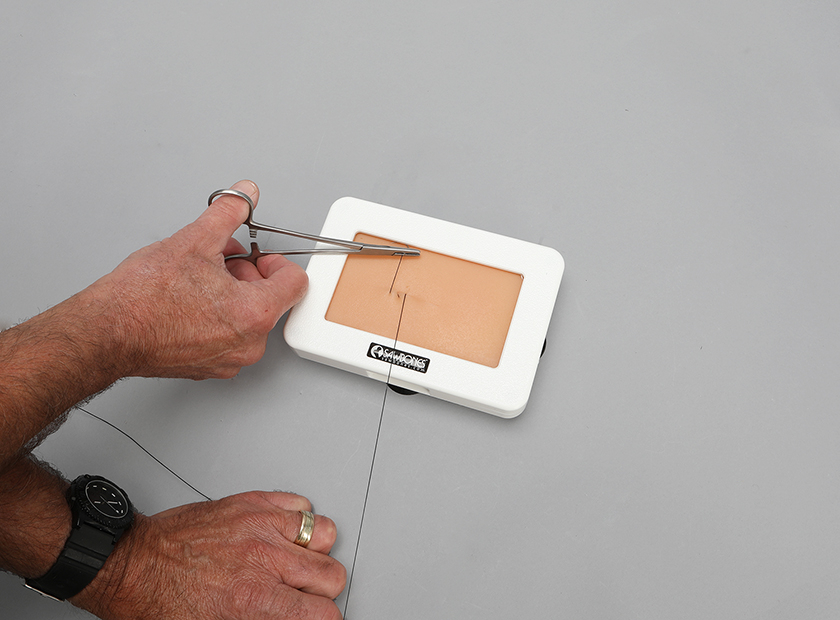Best Suture Training Models for Teaching Multiple Techniques
The use of suture training models is an indispensable tool for teaching students or refreshing medical practitioners in the art of situational suturing. As a teaching tool, suture training models must mimic the most common suturing skills, such as the simple interrupted pattern or tension-relieving patterns. When practitioners use these skills in a clinical or emergency environment, they will have practical experience.
Preparing a successful practitioner requires the right set of suture training models available for hands-on practice. Learning about the capabilities and best training scenarios for the different options available goes beyond usability. The kits you choose must offer instructors the ability to showcase different scenarios, and they must be reusable to maximize the training ROI of the suturing kits.
The Feel Must Be Close to Real
Despite the necessity of realistic feeling suturing models for training scenarios, many models on the market fall short. This quality is vital, as students need to learn the tactile feel of the suture, needle, and the surrounding skin and tissue areas to properly develop competent skills. There is also the durability factor, as more durable and flexible model options will allow for more practice.
A high degree of accuracy in the tactile feel of a suture training model will also allow students to practice scalpel techniques. An ideal suture training model situation would provide students with a wide range of scenarios and ample spacing to practice scalpel skills. This characteristic provides the student with more depth training and leaves them better prepared for what they may encounter in a clinical or operating room setting.
Rating Your Suture Model Needs
When selecting a suture model, you must go into the selection process with a clear understanding of its application. Those being trained to apply stitches to shallow cuts and other basic first aid tasks will not need as much realistic feel in a model as those who are training to be ER or OR nurses. Weighing these needs will keep costs under control and lessen the likelihood of providing training that intimidates or falls short of the student’s skill requirements.
Simulated Anatomical Likeness in Models for Superior Training
The most effective suture training models will include anatomical similarities to real patients. Some of the most vital suture training elements—such as skin layers, follicles, fat, and muscle tissue—are necessary for the model’s success as a training tool. It must exhibit the same reactive features as real skin and its layers, such as authentic elasticity in the skin and tissue and accessible circulatory and nervous system features.
In presenting students with the three primary layers of the human anatomical structure (fat, muscle, skin), a model will become an invaluable teaching tool. Students can then learn how to navigate each layer properly and practice suturing techniques in flesh wounds, scrapes, deeper cuts, lacerations, and incisions. The proper representation of these layers will be available in the top suture models but may not be necessary in every case.
Rating Your Suture Model Needs
Will your students be in a position of navigating multiple tissue layers, blood vessels, or a patient’s neural network? If so, then the best suture training model for you must be as complex and anatomically realistic as possible. Advanced anatomic models are also ideal for training practitioners to work in burn or trauma units or for anyone that will eventually hold a scalpel.
Suture Training Models Must Support Multiple Types of Common Procedures
In addition to being anatomically accurate, suture models should come pre-equipped with the ability to demonstrate the most common types of suturing procedures. Some of the most common examples include:
- Intradermal and subcuticular sutures
- Two-level closure
- Continuous suture pattern in the fascia
- Simple continuous pattern
- Simple interrupted pattern
In addition to accurately demonstrating standard suturing techniques, high-end suture kits will allow students to practice suturing in additional scenarios. Abscess or cyst removal or the treatment of dermal lesions and ingrown toenails are all procedures that can be demonstrated to students. Models that include all of these training features will be comprehensive enough to develop students’ confidence when they perform these tasks in a clinical setting.
Rating Your Suture Model Needs
Another reason for having a solid understanding of the type of training you need to provide is seen in your environment’s most commonly executed procedures. If simple continuous and simple interrupted pattern suturing is all you need to accomplish, you will not need the same model as those demonstrating suturing in an intestinal anastomosis scenario.
How Can a Medical Training Solution Provider Help?
Selecting the suture training models that provide the level of comprehensive training required for your clinical environment can be confusing and time-consuming. Balancing a realistic feel with the durability and determining the level of anatomical detail you need is an analysis best conducted with an anatomical medical training model expert. This guidance will help you present only the necessary training you need with durable, portable, and affordable kits.
Medical training model manufacturers like Sawbones have spent the past four decades improving medical models in conjunction with notable medical programs and physicians. Our skilled team will work with you to design the highest quality clinical or educational models. To learn more about our services, please visit our contact page or call (206) 408-7603.

Our engineers, cultivated through our partnership with Pacific Research Laboratories, access a wide range of processes and tools to develop medical educational supplies for universities, hospitals, research and development, and more. Our years of experience creating these products allow us to make stock and custom models for all purposes.








